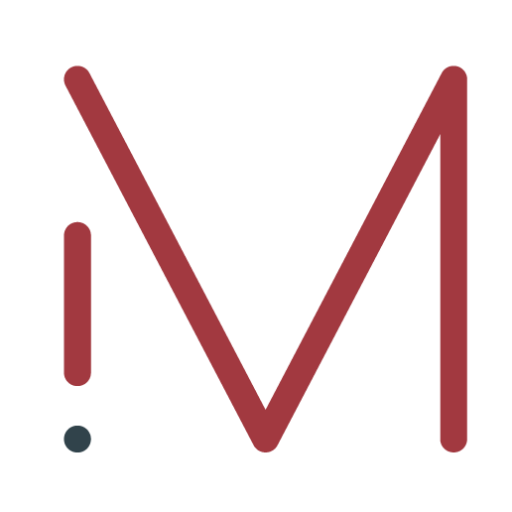
Becoming a thought leader on LinkedIn
For anyone who works in B2B or a nonprofit, providing thought leadership content on LinkedIn is a great way to build brand awareness, establish credibility in your field, and nurture loyal customers.
While all platforms have their audiences and their strengths, LinkedIn is one of the best places to post if you’re trying to reach people in a professional capacity. It has over one billion users worldwide, over 200 million in the U.S. and over 21 million in Canada. It’s known as the platform for business, where everyone from university graduates to veteran business leaders can share ideas.
If you’re ready to share your ideas about your industry, you can start building your brand and authority by following the tips below.
But first: what is a thought leader?
Thought leaders are influential and innovative subject matter experts. When you unpack that statement, there are a few elements that thought leaders tend to have in common:
- Subject matter expertise and experience
- A distinctive communication style
- Fresh information and insights
- A large following
People who are considered thought leaders have almost always put in a lot of hard work over many years out of enthusiasm for a topic. You can’t just flip a switch and become a thought leader in healthcare, waste management or procurement even if you’re already an expert. This is because you have to get other people to agree that you’re an expert.
To do that, you need to spend time keeping up to date with what’s going on in your industry, and communicating about it frequently in a wide spectrum of formats (we’ll get to those below).
Steps to establishing thought leadership
1. Start by updating your profile
If people are new to your content, they’ll want to check out your profile to see if your skills and experience support what you’re saying. A fully fleshed-out profile will help them take you seriously.
Having a commercial-quality headshot for your profile image is a great place to start. You don’t have to give a big smile if you’re not comfortable with that approach, but the photo does need to be well-lit and have an uncluttered background. Ideally, it should convey a sense of who you are.
When it comes to the headline and description for your profile, don’t confine yourself to your current job title if it’s long and obscure. Instead, include information that answers the question, “Why should I believe you?”
In your profile details, go beyond your work history and education (although those should be up to date): expand the skills section and ask for endorsements and recommendations. If you have a selection of published content already available online, choose some articles for the “Featured” section.
2. Define and understand your audience
Spending some time doing some reconnaissance will go a long way. Everyone will be at least somewhat familiar with the challenges of their industry, but you can learn a lot by reading other people’s posts and getting a wider sense of what your peers are interested in. Given that the platform we’re talking about is LinkedIn, audiences will naturally be interested in information that will help them do their jobs better and bring growth to their organizations. But what specific topics are they concerned about?
Read what other experts are posting. What tends to do well and earn a lot of reactions? Develop a mental map of what content is already out there, because you’re going to need to top it.
3. …And then astound them
It’s not enough to just create good content that’s informative, relevant and actionable. To gain traction with your audience, it also needs to be fresh and different. People are drawn to new things, and that includes new ideas.
Good presentation also helps. Communicate clearly and in a way that stands out. You don’t have to be a great designer or writer (unless, of course, that’s your area of expertise). Consider working with a creative team to finesse the text and design visuals that will grab attention in your followers’ feeds. If you can’t afford to hire people to help you, level up your skills with some courses and do the best you can.
Experiment with different formats for your posts. Share PDFs, presentations, infographics, and videos as well as single images to help convey your insights. LinkedIn post captions have an especially long word count (up to 3,000 characters), and many people share posts that are practically blogs. But LinkedIn also allows you to write articles directly on the platform. Using your posts to drive people to your external website is also a smart move if there’s additional valuable information for them to see. Just remember that some people want to stay on LinkedIn (especially if they’re on a mobile), so if you’re asking them to leave give them a good reason.
Case studies, reports and original research are all effective types of content to share. Comment on what you see happening in your industry, and offer opinions on what these events mean for the future.
4. Be prepared for the time commitment
Becoming a thought leader won’t happen for free: it will take some combination of time and money. Expect to spend at least an hour a day keeping up to date with what’s going on in your industry and finding out what other people are saying on LinkedIn. You’ll need more time to create your own original content.
Don’t underestimate the power of real-time engagement. Get out there and comment on other peoples’ content, and share it if you think it will be interesting to your audience. Think of LinkedIn as a networking event: no one likes to talk to the person who just wants to talk about themselves.
When it comes to sharing your own content, pre-scheduling your posts can be an efficient approach for information that isn’t time-sensitive. This is a great option for more considered analyses, like opinions on reports. But if the item is a reaction to something in the news that affects your industry, be aware that others may have already shared the same thing, so decide how you’re going to add value if you’re posting when it’s no longer news.
It can be a juggling act but aim for consistency in posting while maintaining quality and originality.
5. Engage authentically
Ever since Mark Zuckerberg started showing up to business meetings in jeans and a hoodie “professional” has ceased to be synonymous with “formal”. Business communications in many industries have followed a similar trajectory. But if looking and sounding like you just jumped off of a skateboard doesn’t feel right to you, stick with your own style—just remember that the point of communication is to help others understand your ideas, and they need to be reasonably accessible to your audience. The more informal you are, the easier it will be for busy people to understand you.
Remember that engagement is a two-way street. It’s not enough to just issue proclamations: the goal is to build relationships and trust through discussion. Consider joining LinkedIn groups related to your industry.
6. Collaborate
What’s better than hearing what one expert has to say? The interplay between two sets of ideas, of course. Our families aren’t necessarily interested when we want to talk shop, so why not exercise the urge online?
Collaborating with peers, influencers, and complementary businesses is a great way to expand your reach. Approaches to try include co-authored articles, joint webinars, and guest appearances in industry publications and on podcasts.
7. Avoid the pitfalls
It’s possible to lose credibility if you become too focused on your own ideas. Be sure to be an active listener to other experts in your field and give them their due when it’s appropriate so you don’t seem out of touch.
If you’re sharing information that goes against the grain, support what you say with credible proof (i.e. data) because you’re going to be scrutinized. If your assertions don’t stand up to investigation, people will simply stop listening.
This brings us to disagreements. In general, you have two choices when you see a post you disagree with: you can ignore it or you can provide an opposing opinion in a comment (ideally respectfully). If you want to encourage a thoughtful discussion, be nuanced: explain what you like as well as what you dislike about their ideas, and explain why.
LinkedIn has a different culture from X (formerly Twitter), and audiences tend to be looking for thoughtful debate rather than a slugfest. And while LinkedIn tends to be less prone to knee-jerk political divisions, for some topics they do exist. Understand that there may be a backlash and decide in advance if you’re prepared to face it, and how you want to handle it if it occurs.
At the other end of the spectrum lies the risk of being ignored if your content is too safe, generic, or inauthentic. It doesn’t hurt to start off with a tone of humility, but if you find people aren’t reacting to your content, you may want to be a bit more forthright.
Above all, don’t be overtly self-promotional. You need to be real and share enough to be relatable, and it’s great to share personal achievements, but it’s crucial that you remember to be useful to your audience.
It’s never too late to start
You don’t need to have 30 years of experience in your field to provide valuable content. Thought leadership on LinkedIn isn’t just about communicating information; it’s about cultivating meaningful connections and earning trust. Fundamentally, it’s about sharing your love for what you do and caring enough to spend the time to talk to people.
If you’re prepared to deliver intelligent ideas, engage authentically, and build a community around your journey, you can become a go-to resource in your domain.



